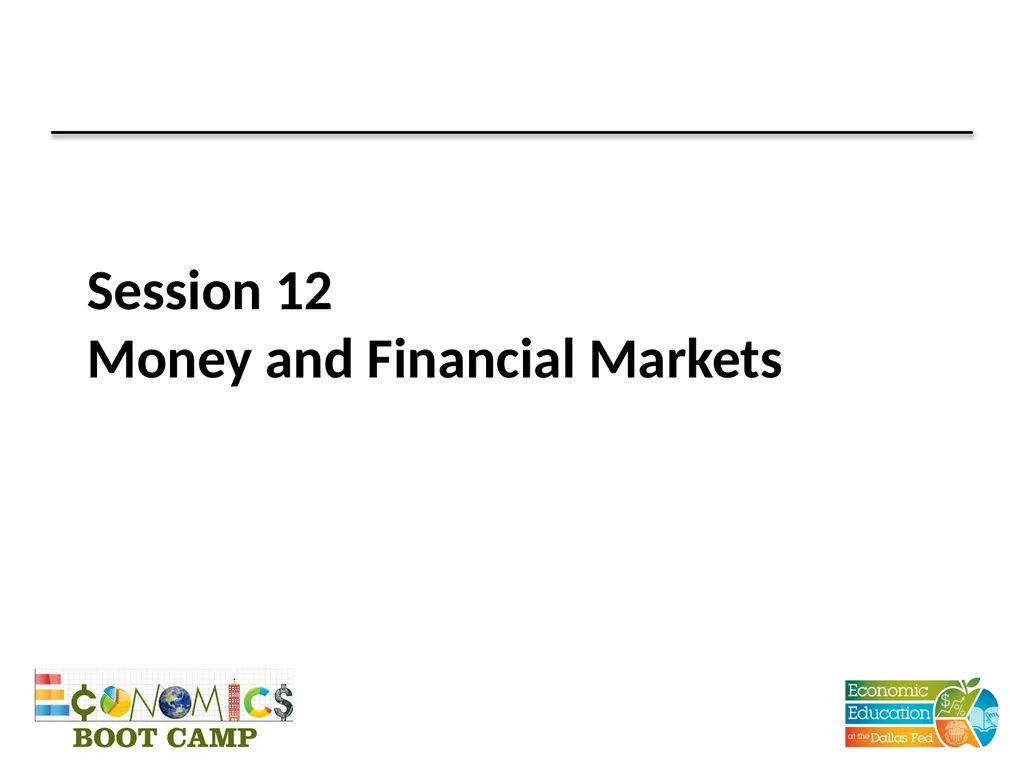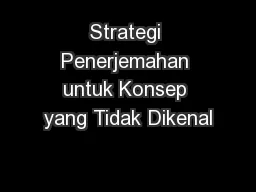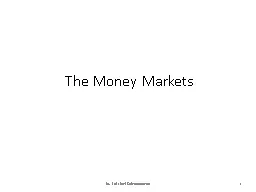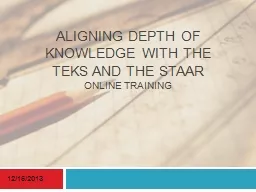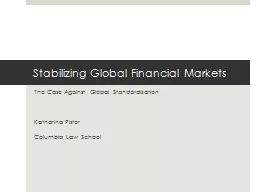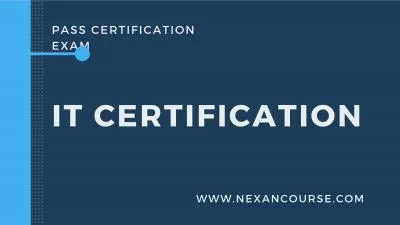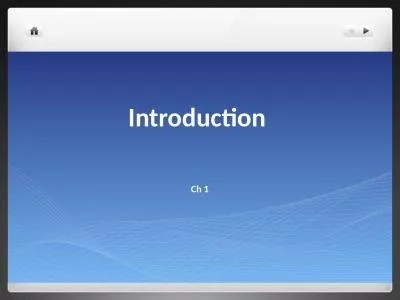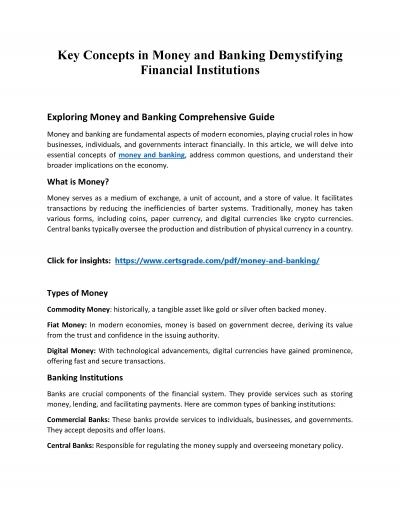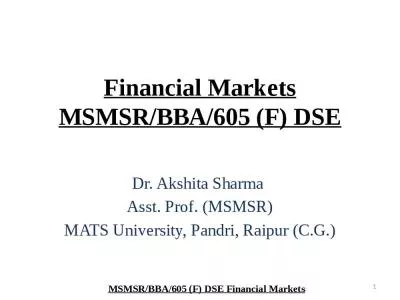Session 12 Money and Financial Markets TEKS (12)
Author : tatiana-dople | Published Date : 2025-06-23
Description: Session 12 Money and Financial Markets TEKS 12 Economics The student understands the role of money in an economy The student is expected to A describe the functions of money B describe the characteristics of money including
Presentation Embed Code
Download Presentation
Download
Presentation The PPT/PDF document
"Session 12 Money and Financial Markets TEKS (12)" is the property of its rightful owner.
Permission is granted to download and print the materials on this website for personal, non-commercial use only,
and to display it on your personal computer provided you do not modify the materials and that you retain all
copyright notices contained in the materials. By downloading content from our website, you accept the terms of
this agreement.
Transcript:Session 12 Money and Financial Markets TEKS (12):
Session 12 Money and Financial Markets TEKS (12) Economics. The student understands the role of money in an economy. The student is expected to: (A) describe the functions of money; (B) describe the characteristics of money, including commodity money, fiat money, and representative money; and (C) examine the positive and negative aspects of barter, currency, credit cards, and debit cards. TEKS (17) Personal financial literacy. The student understands the role of financial markets/institutions in saving, borrowing, and capital formation. The student is expected to: (A) explain the functions of financial institutions and how they affect households and businesses; (B) explain how the amount of savings in an economy is the basis of capital formation; (C) analyze the role of interest and risk in allocating savings to its most productive use; and Teaching the Terms Commodity money Fiat money Representative money Liquidity Default Problems with barter Inefficient Time consuming Difficult to satisfy wants and needs consistently Functions of Money Sources of Money’s Value Commodity Money – medium of exchange has intrinsic value Representative money – medium of exchange represents a claim on an item of value Fiat Money – medium of exchange has value by government decree Characteristics of Money Portable Durable Divisible Uniform Limited Acceptable What is the difference? Monetary Aggregates Monetary Aggregates Liquidity Ability to convert an asset to a medium of exchange without loss of value Factors that affect liquidity include Time constraints Withdrawal restrictions Minimum deposits Market conditions When liquidity decreases, savers demand compensation (interest) Credit cards represent a loan. The card (or the number) is simply a way to access a line of credit. On the other hand, a debit card is a way to spend checkable deposits, just like a paper check. Financial Markets Types of Financial Intermediaries Banks, savings and loans, credit unions Mutual funds Life insurance companies Pension funds Benefits of Financial Intermediaries Reduce transaction costs by gathering and providing information Reduce risk by allowing diversification Increase liquidity Risks of Saving or Lending Default The saver might not be repaid (either the original amount or the promised interest) Liquidity How quickly can the saver access the money? Inflation The interest rate might be less than the rate of inflation Trade-offs Trade-offs Inflation Risk A student has saved $100 to buy an iPod, but she faces a choice Buy it today Loan the money to a friend for one year and buy her iPod
